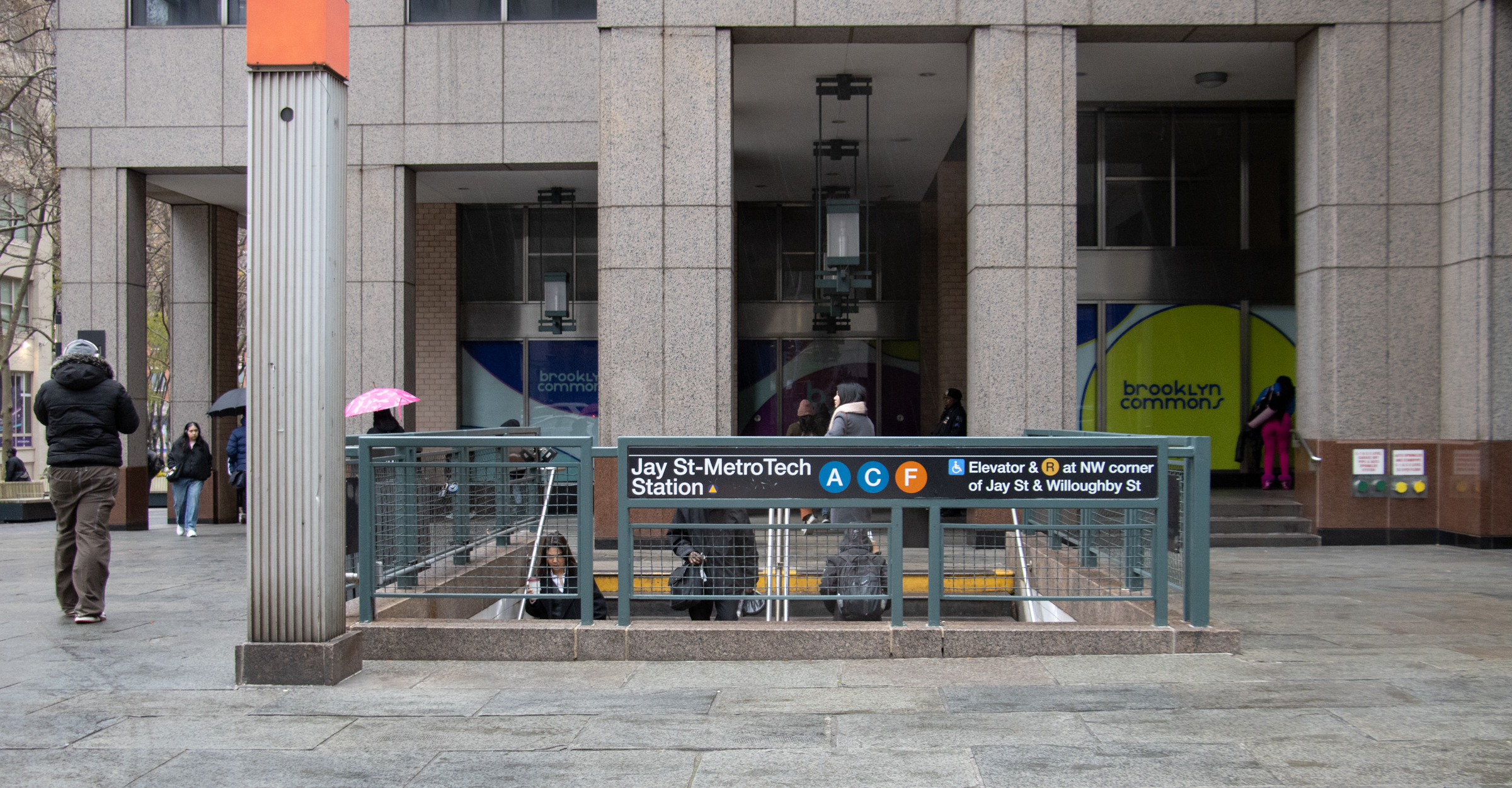Emergency Demo at 100 Clark Clears Tenants
[nggallery id=”21618″ template=galleryview] After years of neglect, the beautiful brick building at the corner Clark Street and Monroe Place in Brooklyn Heights was partially torn down over the weekend due to conditions that were deemed “imminently perilous to life”; two floors of the 15-unit building were torn down following a 311 call that reported visible…

[nggallery id=”21618″ template=galleryview]
After years of neglect, the beautiful brick building at the corner Clark Street and Monroe Place in Brooklyn Heights was partially torn down over the weekend due to conditions that were deemed “imminently perilous to life”; two floors of the 15-unit building were torn down following a 311 call that reported visible buckling. “It’s been a very, very badly neglected building,” Frank Folisi, landlord of the building next door, told The Post. “Everyone who has owned this building has taken money out of it and not put any money into it. I don’t walk on that side of the street anymore.
The theory over on the Brooklyn Heights Blog is that owner Penson Companies, which bought the building for $3,650,000 in 2006, had a strong financial incentive not to step in sooner to save the building. Why’s that? Because condemnation was the only way to get free and clear of the three remaining rent-stabilized tenants. The marketing document (excerpted on the jump) Penson has been using in recent months to try to sell the building (the price had started at $4.45 million but had recently gotten as low as $3.5 million) reveals that the tenants were paying monthly rents of $550, $617, and $575 and that approved plans had been approved by Landmarks for a rear extension that would have taken the size of the building from 8,000 square feet to 9,750 square feet. So we’re talking about the difference between the building being worth $3.5 million and $10 million. Sound like reason enough to look the other way? Now, many questions remain: What happens to the homeless tenants? Will the rest of the building be torn down? What will Landmarks require for rebuilding? Are there any criminal consequences for this type of neglect? Enquiring minds want to know.
Tenants Flee Buckling Heights Building [NY Post]
Penson to Brooklyn Heights: Drop Dead [Brooklyn Heights Blog]
‘Dereliction of Duty’ in Brooklyn Heights [Brownstoner]
Photos 1-9 by Ali Lovell; 10 by Chris in the Heights








The tenants here overplayed their hands.
Or they simply wished to stay in the building until it collapsed. Now they are in a Red Cross shelter. They are fortunate that they escaped unharmed. Meanwhile the owners must be dancing a jig. Suddenly they own a very valuable vacant lot on a prime location in Brooklyn Heights.
10:37 here:
They’ve been trying to negotiate a buy-out since the last time this place was evacuated back in 2004. That was with the previous owners.
And this was in The Post this weekend:
In August 2004, 14 families were forced to leave the building after a 10-foot-by-10-foot section of the facade crumbled onto the street.
“Conditions in this premises are imminently perilous to life,” read a sign that was posted at the time.
“It’s very stressful for me,” said tenant Ofer Nevo, 55, who took part in both evacuations.
He said that during the latest trouble, a Department of Buildings employee said, “We’re here to condemn the building. You have to get out.”
Nevo has been trying to negotiate a buyout with the building’s owners, Edward and Andrew Penson.
The Penson brothers – who have fought tenants at other properties over maintenance and rent issues – have been slapped with a violation for failure to maintain the building, authorities said.
I hope that the posters who insist that buying an occupied building with rent-regulated tenants is “no big deal” take a lesson from this. The tenants would not budge. Are they crazy? Possibly. There are tons of crazy people in the city. Buying a property with a rent-regulated tenant is a marriage with no divorce provisions. It is literally “til death do us part”.
From Penson Companies website”
‘BUSINESS STRATEGY
The business plan of The Penson Companies is based upon seeking well located real estate and finding a way to add value by exploiting below market rents or changing the physical nature of the project, finding the highest and best use for the asset and consequently maximizing income. In the past, investors with The Penson Companies have enjoyed higher than industry – standard returns on investment.’
“Changing the physical nature of the project” must include demolition via dereliction.
10:37: Do you have personal knowledge that this is true or is it speculation? It would be great to know which, as everyone here is wondering what about the true situation.
Penson bought this thing when it was already falling down. Who knows what they were thinking, but I doubt 3 tenants factored into their plans too much.
The tenants meanwhile, were waiting for a buyout for Penson and not getting one that met their number. This was a chicken game that I would NOT have been willing to take if I were a tenant, but it was their necks on the line I guess. They were willing to risk dying in the rubble for a check.
“Why has “everyone who has owned the building” allowed it to fall into a state of disrepair?” Because there are currently no large penalties for doing so.
“two floors of the 15-unit building were torn down following a 311 call that reported visible buckling.”
Anyone else wondering if someone from Penson Companies made that call hoping it would get torn down and they could rebuild something more profitable without having to face some sort of involuntary manslaughter charge (or whatever they might face if people died)?
Anyway, I see some solutions to the rent control issue but how do we stop landlords from allowing these places to crumble and force them to make the necessary repairs?
There are lots and lots of things that are profitable to do, but just happen to be illegal.
If the building in question is a money pit, then Penson should have done their due diligence before hand. The cost of the building should have reflected the rental income they could have expected, along with the capital costs of any required renovations.
If they could not get a decent ROI on the building WITHIN THE PARAMETERS OF THE LAW, then they have negotiated a lower price, or walked away from the deal altogether.